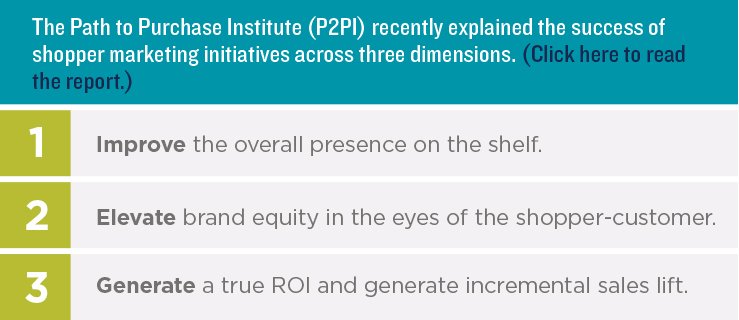
Over the summer, a guest viewpoint in Progressive Grocer proclaimed that shopper marketing was dead. Basically, the argument was that retailers must embrace the success in strategic targeting of promotions by Kroger and those facilitated by the analytics provided by 84.15. This is the “customer of one” approach. Middlegame would never debate the importance of growing loyalty and increasing the portion of sales attributable to repeat purchases. However, we think that the main problem with shopper marketing is the lack of focus on transferred demand and incrementality.
While all of these are important, nowhere in the document do the authors explain ROI in the context of transferred demand and incrementality. In fact, the paper concludes with a quote from the head of sales of a food and beverage manufacturer who says “our national shopper marketing organization is constantly generating materials about general trends and insights which our customers look at those with suspicion and in the end leaves our customer teams frustrated”. It makes sense. Transferred demand and incrementality is nowhere to be found in the 2017 Guide to Retail Shopper Insights report by the P2PI.

It can probably be argued that our four points closely aligned with the three points made by P2PI. What really stands out to me is Middlegame’s last point about allowing stakeholders to evaluate options. This is operationalized by the CIA® platform explanation of transferred demand and incrementality in the context of scenario planning. Our first blog about prescriptive analytics by Vegard Søhus put this in really good perspective and might be worth a reading again. Regardless, we shouldn’t think of shopper marketing dead despite how much “customer of one” promises. Shopper marketing does need something to breathe life back into it. We think it is prescriptive analytics in the context of transferred demand and incrementality.
Middlegame is the only ROMI consultancy of its kind that offers a holistic view of the implications of resource allocation and investment in the marketplace. Our approach to scenario-planning differs from other marketing analytics providers by addressing the anticipated outcome for every SKU (your portfolio and your competitors’) in every channel. Similar to the pieces in chess, each stakeholder can now evaluate the trade-offs of potential choices and collectively apply them to create win-win results.

